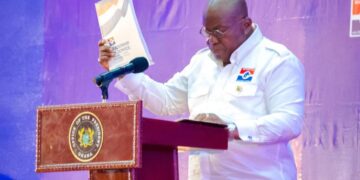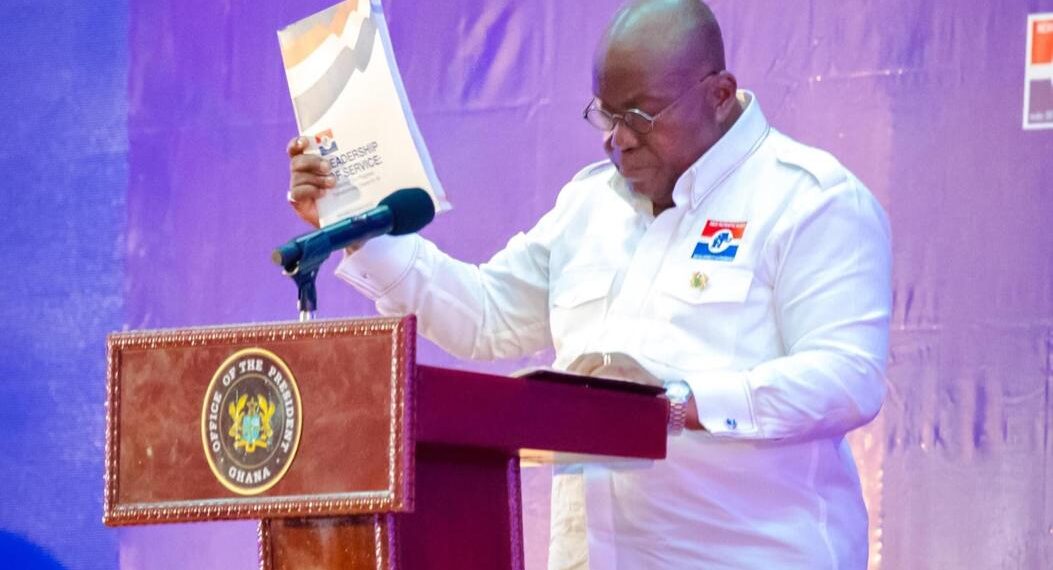Physical Infrastructure
The provision of roads, highways, railways, water and sanitation infrastructure will continue to be a major focus of the next Akufo-Addo government. Our decision to set up a separate Railway Development Ministry, the Infrastructure for Poverty Eradication Programme (IPEP) and the Development Authorities, as well as the Ministry of Inner City and Zongo Development, and the Zongo Development Fund, has led to significant progress in adding to our railway infrastructure, in the provision of basic infrastructure at the local level and for special disadvantaged communities like the Zongos and Inner Cities, as well as the construction of new roads under the “Year of Roads” Programme.
Flagship Infrastructure Development Initiatives
Over the next four years we will:
• strengthen the capacity of Development Authorities and the Zongo Development Fund, to enable them attract private investors to develop infrastructure in their catchment areas and, give priority to completing all on-going projects under our flagship infrastructure policies of “Year of Roads”, “Water For All”, “Toilets For All” as well as other local infrastructure, including, but not limited to:
• infrastructure such as drains, culverts, feeder roads, classroom blocks, school furniture, CHPS compounds markets, toilet facilities among others as part of the efforts to bridge the infrastructure gaps at the community level
• Marine Drive Project
• extending electricity to cover the entire population, and
• completing Yendi, Tamale, and Damongo Water Supply Projects
• commence construction of:
• the Sunyani and Keta Water Supply Projects
• the Weija Dam Rehabilitation Project
• decommissioning and re-engineering of landfill sites including the Kpone (Tema) and Oti (Kumasi) landfill sites
Roads, Railways, Ports and Harbours
Inadequate transport networks that connect cities, towns and rural areas, poor quality roads, and growing urban traffic congestion are critical areas requiring urgent action, as well as expansion in port and harbour infrastructure to enhance trade and promote investments. Over the next four years, we will:
• use Public-Private Partnership to accelerate the development of road infrastructure through toll-financing
• finalise our public transport policy for a network commensurate with the needs of a fast growing economy
• launch the biggest ever road maintenance infrastructure programme, as part of improvements in our existing road infrastructure and as a source of major job creation for the youth. This will be targeted at youth-owned enterprises
• re-launch the metro mass transport system throughout regional capitals
• introduce innovative policies to facilitate urban traffic de-congestion • complete development of the Buipe Inland Port
• complete development of Coastal Fish Landing Sites
• complete development of the Boankra Inland Port
• upgrade Tema Shipyard and Drydock
• Volta Lake Transport Improvement
• complete development of Atuabo Port
• completion of the construction of the Western Line, and Tema to Mpakadan rail lines
• commence construction of:
• the Eastern Rail Line
• the Aduadin to Obuasi Lines
• the Ghana – Burkina Line
• a new line between Sekondi and Shama Free Zone area
• a new harbour in Cape Coast, and • a new airport in Cape Coast
• prioritise feasibility studies in establishing a rail link through Kasoa to Accra with the view to establish a railway line service to reduce significantly travel time to and from that fast-growing part of Greater Accra and Central Regions.
• Continue investing in the expansion of infrastructure at all public tertiary institutions to enhance capacity and facilities to absorb the expected increases in student population as graduating students from Free SHS pursue further education
• Bridging the Development Gap between the North and the South We will continue to implement existing policies and ongoing projects to bridge the development gap between the northern and southern regions of Ghana e.g. IPEP, 1V1D, 1D1F, Pwalugu Dam, Critical Roads, Ghana—Burkina Rail Link among others, as well as revamp the cotton industry, establish rice mills in rice producing districts, revamp dams such as Vea, and Bontanga (Tono has been rehabilitated), develop the Buipe in-land port, district hospitals and regional hospitals in districts and region without, construction of the Daboya and Dikpe bridges, upgrade the Tamale Airport, pursue the Iron and Steel Industry project, and continue the exploration for oil in the Voltain basin amongst others
• Use of Local Content in Infrastructure Development Government makes significant investments in public infrastructure development, including roads, schools, hospitals, clinics, office buildings among others. Most of our roads are constructed with asphalt overlay or with bitumen surface dressing (BSD), and most public buildings are constructed with cement and concrete materials. 90% of the raw materials for producing these two primary products are however imported, costing the country more than $1billion annually. On the other hand, we have demonstrated the availability and durability of local building materials, including burnt bricks and Pozzolana cement. Several brick factories can be found in the Ahafo, Ashanti, Bono and Central regions. We have also two Pozzolana cement factories in Ghana. Over the next four years, we will actively mainstream the use of these, and other local materials in public sector infrastructure projects.



















